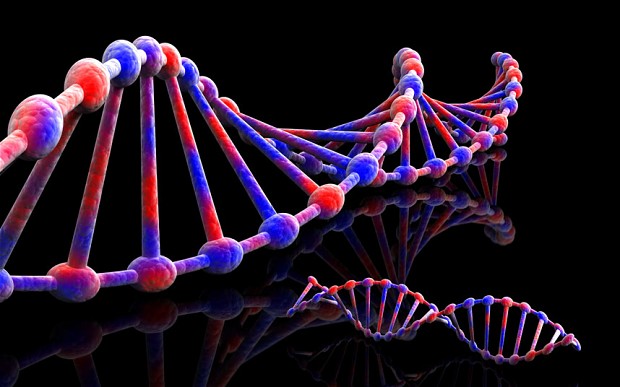Sport and Exercise Medicine: The UK trainee perspective – A BJSM blog series
By Dr Christopher Speers
At a recent Cardiac Conditions Clinic with Dr William Bradlow (Consultant Cardiologist) at the Queen Elizabeth Hospital Birmingham, we reviewed a number of patients with Hypertrophic Cardiomyopathy (HCM) and Dilated Cardiomyopathy (DCM).
 These consultations produced numerous patient-centered exercise-related discussions, but one case in particular raised a challenging and novel exercise medicine dilemma; genotype positive-phenotype negative HCM.
These consultations produced numerous patient-centered exercise-related discussions, but one case in particular raised a challenging and novel exercise medicine dilemma; genotype positive-phenotype negative HCM.
This is seen in patients who have a family history of HCM, and have tested positive for a genetic mutation attributed to causing HCM. However, they have normal ECGs and echocardiograms with no evidence of cardiac hypertrophy or left ventricular outflow tract obstruction. Therefore they are diagnosed as having ‘genotype positive-phenotype negative HCM’.
Are genotype positive-phenotype negative individuals at increased risk of Sudden Cardiac Death?
We know that HCM is phenotypically heterogeneous; with the age of onset, severity of symptoms, and relative risk of Sudden Cardiac Death (SCD) showing inter-patient variability even within family members with the same genetic mutation (1, 2).
Some studies have shown that particular genotype sub-groups, for example mutations of Troponin TNNT2 correlate with a higher risk of SCD. There is also evidence that some genotype positive-phenotype negative individuals have impaired relaxation of myocardium, altered energy metabolism, and phenotypic changes such as crypts. This inherently abnormal cardiac tissue may predispose to adverse events (2, 4).
However there are only a very small number of cases of SCD in genotype positive-phenotype negative individuals described in the literature, making deductions challenging (2, 3, 4).
At present the clinical implications of these pre-hypertrophy cardiac changes are not known, and the real risk of SCD is thought to be significantly lower than that in clinical HCM (2, 4).
So what exercise advice should we give?
The governing bodies are clear on competitive sport exemption in individuals with clinical HCM. However the genotype positive-phenotype negative sub-group poses both an ethical and practical dilemma; it is not known if individuals will develop left ventricular hypertrophy or when this may occur. Developing clinical HCM would increase the risk of SCD, becoming particularly dangerous if undiagnosed in those engaged in competitive sport. At present there is no agreed international consensus on management.
The 36th Bethesda Conference 2005 states; ‘Although the clinical significance and natural history of genotype positive-phenotype negative individuals remains unresolved, no compelling data are available at present with which to preclude these patients from competitive sports, particularly in the absence of cardiac symptoms or a family history of sudden death.’ (5)
However the European Society of Cardiology (ESC) 2006 position paper states; ‘Based on the level of present knowledge, the decision for participation in competitive sport should be individualized. However, prudent recommendation suggests restriction of these individuals from participation in competitive sports, especially those with high cardiac demand (i.e. high dynamic, high static sports), and to recommend prudently amateur and leisure time sport activities.’ (6)
2014 ESC guidelines on HCM management have since relaxed this approach to some degree; ‘In definite mutation carriers who have no evidence of disease expression, sports activity may be allowed after taking into account the underlying mutation and the type of sport activity, and the results of regular and repeated cardiac examinations.’ (4)
It is clear that this subgroup of genotype positive-phenotype negative individuals need long-term regular follow-up with 12-lead ECG, echocardiogram, exercise stress testing and cardiac MRI, particularly if engaging in regular sporting activity. The adjunct of genetic profiling may aid with risk stratification in the future.
The implications of this diagnosis and potential restriction from sporting activity are far reaching for the individual, having both negative psychological and physiological effects.
An individualised risk stratified exercise prescription with careful specialist follow-up must form the basis of current and future management. However further research is essential to enable us to understand the natural history of genotype-positive phenotype-negative HCM and the real risk of SCD in this sub-group.
What did we recommend?
In line with the ESC recommendations we worked with our patients, exploring the potential risks and current evidence, and together formulated an exercise prescription. We agreed upon maintaining a healthy level of fitness through regular exercise at an intensity level where one can still hold a conversation, with the stipulation of regular cardiology follow-up.
References
- Ho CY. Genetics and clinical destiny: improving care in hypertrophic cardiomyopathy. Circulation. 2010; 122:2430Y40.
- Sylvester, J. et al. The Dilemma of Genotype Positive-Phenotype Negative Hypertrophic Cardiomyopathy. Current Sports Medicine Reports. Volume 13 & Number 2 & March/April 2014.
- Richard, P. et al. Advising a cardiac disease gene positive yet phenotype negative or borderline abnormal athlete: Is sporting disqualification really necessary? Br J Sports Med 2012;46(Suppl I):i59–i68.
- 2014 ESC Guidelines on diagnosis and management of hypertrophic cardiomyopathy. European Heart Journal. (2014) 35, 2733–2779.
- 36th Bethesda Conference. Eligibility Recommendations for Competitive Athletes With Cardiovascular Abnormalities. Journal of the American College of Cardiology. Vol. 45, No. 8, 2005
- Pelliccia A, et al. Recommendations for participation in competitive sport and leisure-time physical activity in individuals with cardiomyopathies, myocarditis and pericarditis. European Journal of Cardiovascular Prevention and Rehabilitation 2006, 13:876–885.
Dr Christopher Speers BSc(Hons) MBChB MRCP(UK) is a ST3 Sport and Exercise Trainee in the West Midlands Deanery. He works with Bristol Rugby, British Universities and Colleges Sport, and is an Amateur Boxing Association Medical Officer.
Dr Farrah Jawad is an ST4 Sport and Exercise Trainee and co-ordinates the BJSM Trainee Perspective blog.